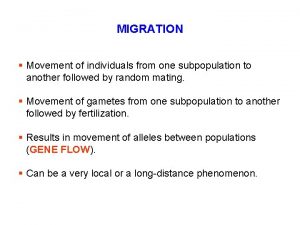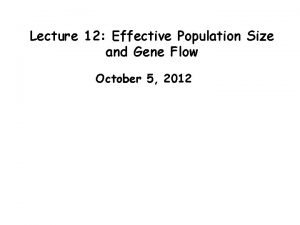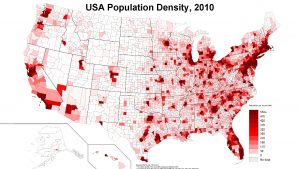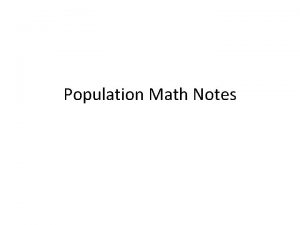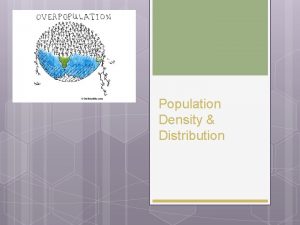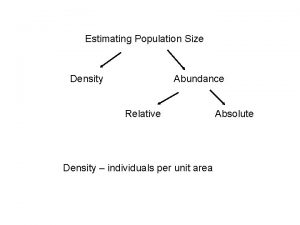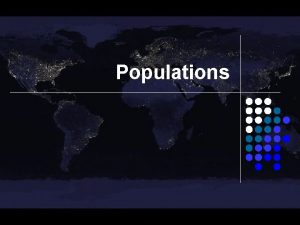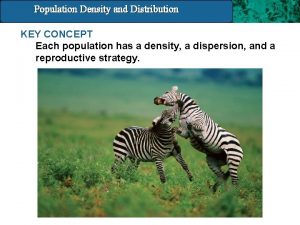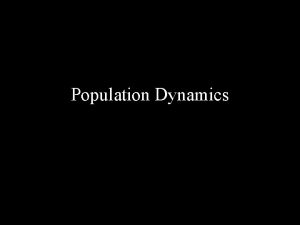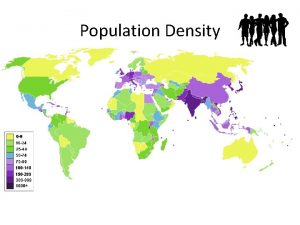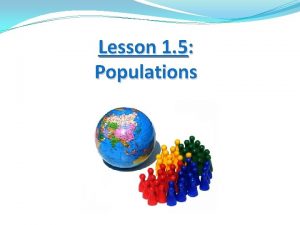Population Changes in Density and Size Population Density














- Slides: 14

• Population Changes • in Density and Size

Population Density & Dispersion

• Density describes the number of organisms in a defined area. Can be found with the following formula: • D p = N / A (or D = N / S in Nelson) Dp is density N is number of organisms A is area

• Density Example In northern Alberta, a study of ducks in a specific 40 ha area showed some significant changes in population. Use the data from the study showing the population changes over a five year period to answer the question • Duck Gender • 1989 • 1990 • 1991 • 1992 • 1993 • Males • 40 • 45 • 50 • 60 • 25 • Females • 40 • 45 • 48 • 40 • 20

• Example Continued • D 1989 • • = N/A • D 1993 • • = N/A • • Is this population changing? How can we describe that change? = = 80 ducks/40 ha 2. 0 ducks/ha = = 45 ducks/40 ha 1. 1 ducks/ha

• Change in Density Changes within a population over time is referred to as R or rate of change. R could be many things. Lets use it for density. Therefore • RD = ∆D/ ∆ t RD is rate of density change ∆D is change in density, calculated with: ∆ D = D – D f i ∆t is change in time, calculated with: ∆ t = t – t f i

• Rate of change, density example Rate of change for density of ducks from 1989 to 1993 D 1989 = 2. 0 ducks/ha, D 1993 = 1. 1 ducks/ha R 1989 -93 • • • = ∆D/ ∆t = (1. 1 – 2. 0)ducks/ha 1993 – 1989 = -0. 9 ducks/ha 4 a = -0. 225 ducks/ha/a

• Size

• Change in Size or Growth Four factors determine change in population: Increasing Factors: Natality (birth) and Immigration Decreasing Factors: Mortality (death) and Emigration An equation for Change in Population Size: • ∆N = (natality + immigration) – (mortality + emigration)

• Size Example A breeding flock of trumpeter swans near Grande Prairie is made up of 50 pairs. This year they had 165 live hatchings, no new birds joined the flock, 5 animals were shot, and 8 did not return this spring. How has the population of trumpeter swans changed. –∆N = (natality + immigration) – (mortality + emigration) = (165 + 0) – (5+8) = 152 –Therefore this flock gained 152 new members!

• ∆Size per capita Per capita growth rate relates change in population size to the original population From our swan example. the cgr would be: • cgr = ∆N / N • cgr = 152 / 100 = 1. 52 –Therefore this pop is growing by 1. 52 swans per swan.

• ∆Size per capita per time Growth usually considers a time frame as well. Adding this to our formula gives: • cgr. N = ∆N / ∆t This type of growth is referred to as just Growth rate considers all of these factors: initial size per capita growth rate factors affecting size time

• Growth Rate Example A population of 100 rabbits has a growth rate of 0. 1 per year. • What is the change in population for the first year? r. N = ∆N / ∆t rewrite for ∆N, ∆N = r. N ∆t ∆N = 0. 1 x 100 x 1 = 10 rabbits What is the population at the end of the first year? 100 + 10 = 110 rabbits What is the change in population for the second year? ∆N, ∆N = r. N ∆t ∆N = 0. 1 x 110 x 1 = 11 rabbits What is the population at the end of the second year? 110 + 11 = 121 rabbits Every year the size of the increase grows, but the rate remains the same.

Homework P. 745 # 1, 2 P. 747 # 3 P. 750 #1, 2
 High arithmetic density
High arithmetic density Elizabeth mulroney
Elizabeth mulroney Chemical change vs physical change
Chemical change vs physical change A transformation that changes the size of a figure
A transformation that changes the size of a figure Unit of specific gravity
Unit of specific gravity Linear density of bcc 111
Linear density of bcc 111 Linear density of atoms
Linear density of atoms Const char *s =
Const char *s = What is size separation?
What is size separation? Nda full dac
Nda full dac Physiological density egypt
Physiological density egypt Effective population size
Effective population size Effective population size
Effective population size Population distribution
Population distribution Birth rate problem
Birth rate problem











